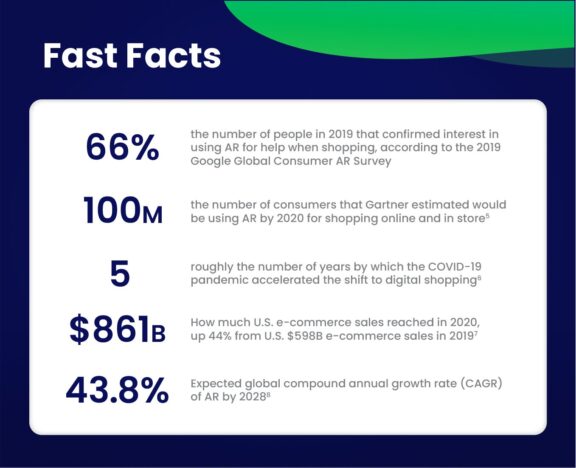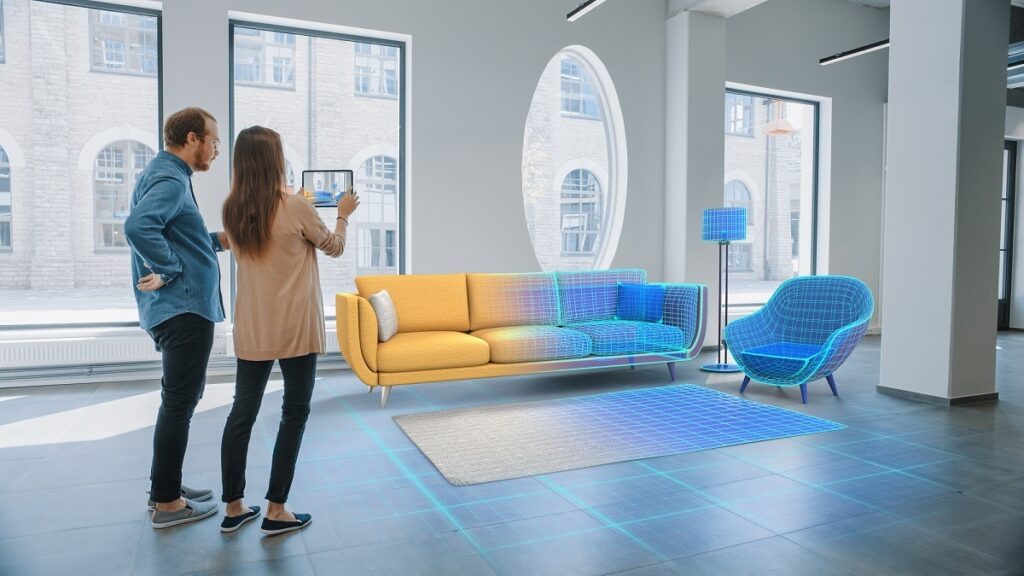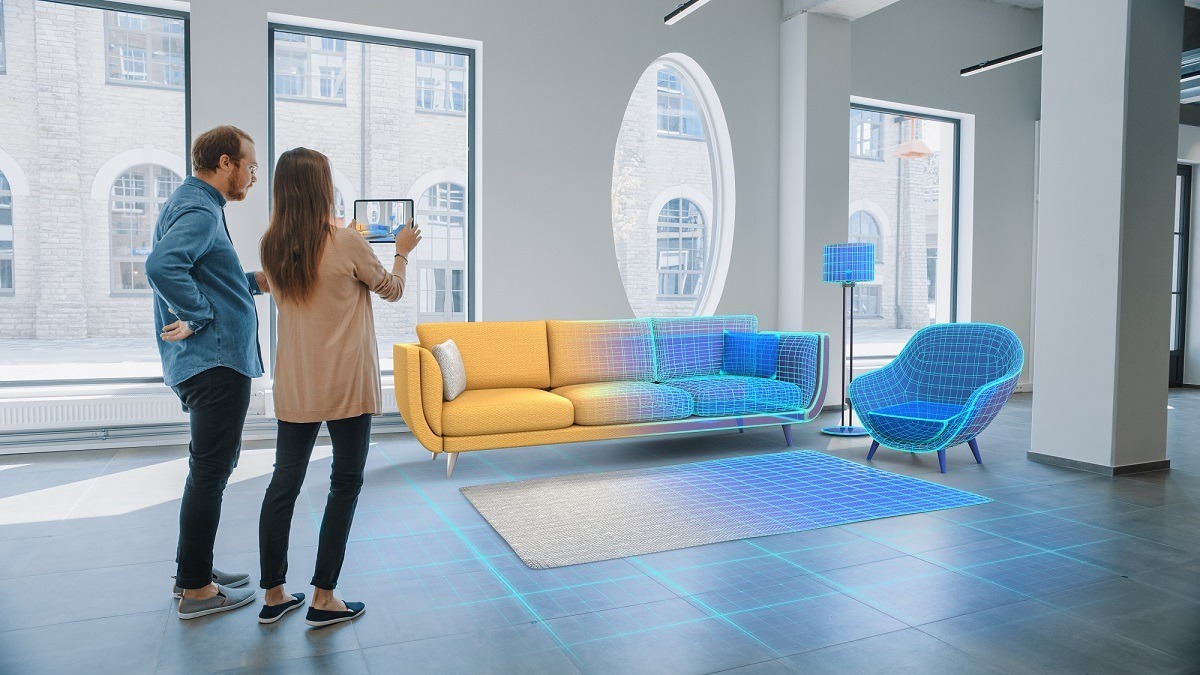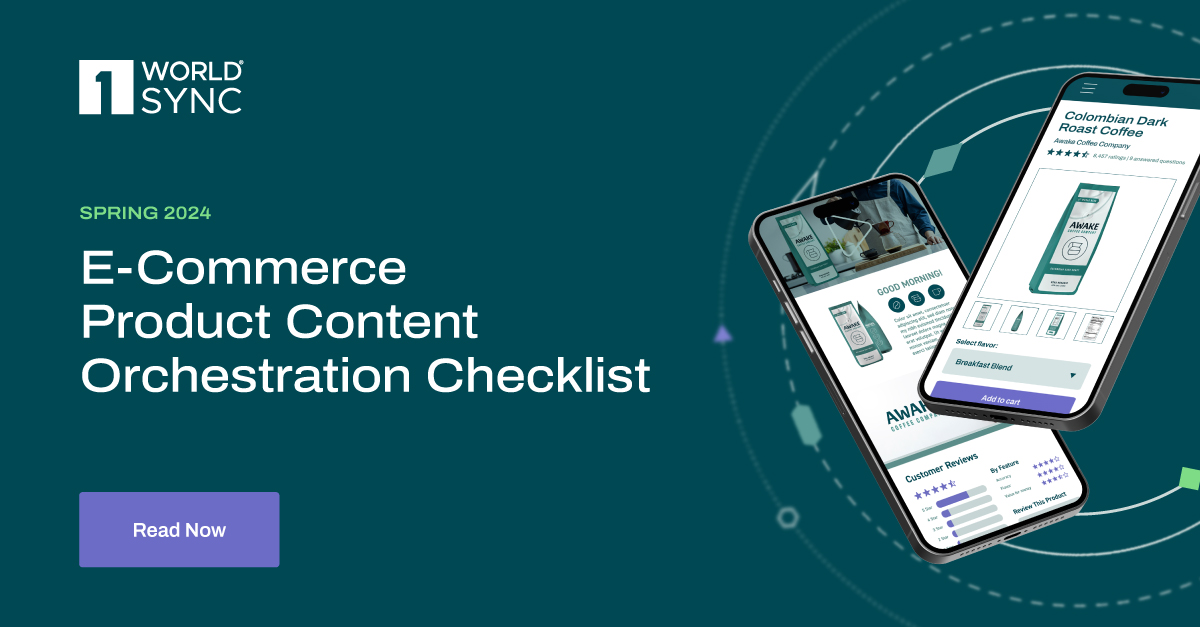How to ensure your product detail pages are ready for augmented reality
Defined by Gartner1 as “the real-time use of information in the form of text, graphics, audio and other virtual enhancements integrated with real-world objects,” Augmented Reality (AR) has come a long way since its inception. It’s no secret that numerous industries—beyond initial AR industry adopters such as gaming and entertainment— embraced the possibilities that AR can deliver.
- In early 2021, Johns Hopkins neurosurgeons addressed a patient’s chronic back pain through use of AR to “accurately place spinal instrumentation in her back” ahead of a spinal fusion surgery.2
- For the mission-critical oil and gas industry, AR contributes to smarter, more automated, predictive maintenance services in the field. In 2016, General Electric workers3 in the field wore the Smart Helmet (now the Kiber Helmet) to capture documents, video and drawings to the helmet’s visor and exchange information in real-time via voice command with the corporate office.
- In the data center market, some providers such as IE Corp. (formerly Baselayer® Technology LLC) went as far as to combine AR and Virtual Reality (VR) capabilities to showcase its EDGE XC10 Modular Data Center4 and address the demand for data and performance at the edge.
Unsurprisingly, an increasing number of cases exploring its use in retail and global commerce also continue to take hold, driven by global e-commerce growth and consumers’ omnichannel shopping patterns. Just last month, UK multi-channel retailer Argos confirmed a 21.6% average revenue uplift following AR interactions, confirming its commitment to ramp up the scale and velocity of AR content made available to its shoppers.

As retailers and brands look to leverage AR for greater customer engagement and consequentially higher product sales, there are several AR product content checklist items and considerations to factor in when leveraging AR modules on product detail pages (PDPs).
Checklist item #1: High-resolution, multi-angle product images
To provide your customers with the high-quality, life-like experiences they expect, capturing high-quality images of the product from all angles, inside and out, is a must. Often, this will also require one of your product team members being present onsite during photoshoots to ensure real-time application shots are also captured to provide an interactive, 360-degree real-time demo experience. Such team members can also provide guidance on what physical aspects of the product would be most important to capture for greater AR customer experiences. Ensure you work with a photographer or team that understands your AR objectives and needs, the required longevity of images, and does not provide limitations on image quantities, file types or editing capabilities. These details are critical to address during AR product content production and creation to prevent additional fees and possible product reshoots.
Consideration #1: AR-tailored omnichannel content
An important aspect fortoday’s retailers and brands to consider is that AR content must go beyondstandard PDP information such as product headlines and descriptions, single product images, price, specifications, and more to influence how customers shop both online and in store. What product information can a consumer experience or receive when buying online? What information can they obtain about a product in-store that they cannot do online? What additional, differentiated information can they obtain via an AR experience before purchasing a product?
As both ecommerce retailers and traditional brick-and-mortar retailers look to leverage AR in different, applicable ways, considering how to tailor AR product content as well as its functionality to meet omnichannel needs is a key starting point. (Note: cases of in-store AR adoption date back to as early as 2014, when US pharmacy chain Walgreens piloted16 3D AR technology to let shoppers more easily locate a particular product as they shopped, get directions to the correct aisle and earn rewards points).
Properly tailoring AR product content often relies heavily on understanding target buyer personas, what topics interest them, when they shop, how they engage with content or products, what basic or specific AR capabilities they require, what information they look for beyond the physical product, and much more. For example, more than 70% of respondents in IBM’s “meet the 2020 Consumers Driving Change” industry report cited they look for specific product attributes—such as if their ingredients or materials were sustainably sourced, have health & wellness benefits, are recyclable or organic—when choosing a brand.
Checklist item #2: Optimized content for animated product hotspots
The QR code is back! AR experiences naturally progressed over the past few years from use of AR goggles to use of QR codes that a user can scan from their smart phone’s camera to view a product in AR (check out consideration #2 below for an example of how this works). As such, the onus is greater to provide clear, direct, short-tail content for use in animated hotspots used in AR to highlight key features and functionalities that will help positively impact a user’s product experience and purchasing decisions. (In short, save those long-tail product descriptions for your PDPs with greater web real estate).
By using animated product hotspots that users can control in the AR experience, you ensure they remain in your AR model for greater engagement versus linking them to your website. Leverage hotspot areas in your AR model to differentiate or highlight product info most relevant for your buyers that might not be found above-the-fold on your PDP. Think ergonomic grip features for better handling of hand-held power tools, or materials listed on clothing tags for apparel or flow-rate specs for kitchen and bathroom sink faucets—all high-points to call out not readily visible by first glance of a product image.
Consideration #2: Verify which retail partners support AR
Before making product content investments specific to AR, it is important to assess and verify which e-commerce or brick-and-mortar retailers allow consumers to leverage AR experience for their shopping needs. For example, when Amazon first launched its initial AR View in 2017, the feature was made available specifically for Amazon’s home products17. Now, consumers can access its “View in Your Room” feature from the Amazon App to access thousands of furniture products in AR.
For those retailers still researching AR applications and use cases for their shoppers, there are available Web functionalities that support AR they can leverage today. For example, brands can leverage 3D/AR product content services and QR code capabilities using 1WorldSync’s ContentCast™ to help their customers better envision how a particular product would look in their space.
Office supplies retailer Office Depot LLC supports the AR functionality equipped with the Xerox® VersaLink® B405/DN Monochrome (Black And White) Laser All-In-One Printer to bring the product to life for its users. Customers can access the webpage from a mobile device or scan the QR code with their smartphone’s camera to launch the AR feature and visualize placement of it in their office or preferred location.
Checklist item #3: Digital collateral capabilities
From product datasheets to flyers, how-to guides for heavier-install items, and more, equip your consumers with such bonus product content directly in their AR experience. No need for your customers to wait to receive a snapshot summary of what they get or could benefit from—it’s right at their fingertips in your AR-provided experience. Tailor your collateral to what they experience in the app that they might not find on your PDP, Digital Catalog or elsewhere.
Checklist item #4: SEO metadata and tagging for increased AR searchability
Because current retailers and brands consistently provide AR experiences through their apps or dedicated e-commerce websites, proper use of product content tags, metadata and search-engine-optimized copy matters more than ever to ensure customers can find and utilize your AR capabilities. Shorter product descriptions or app names have greater visibility probability especially for quick smart phone in-app product searches. Product ‘why-buys’ in your AR model can directly affect your customers’ buying behaviors and choices, whether they’re shopping in person or online.
Learn how 1WorldSync can bring your products to life via our AR capabilities. Test out the Xerox B405DN in your office space today or make the Microsoft Surface Pro 7 come to life on your desktop screen and contact us today.






